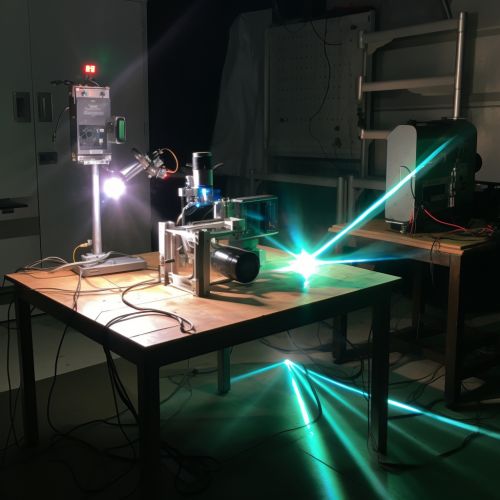Transformation Optics
Introduction
Transformation optics is a field of study within optics that uses the principles of differential geometry to manipulate the path of light. This is achieved by altering the metric of the space through which the light travels, effectively "transforming" the space itself. The field has significant potential for applications in areas such as cloaking devices, superlenses, and optical circuitry.


Principles of Transformation Optics
The principles of transformation optics are rooted in the mathematical field of differential geometry, specifically the concept of a metric. In the context of transformation optics, the metric of a space is a function that describes how distances are measured within that space. By changing the metric, it is possible to manipulate the path that light takes through the space.
The metric is typically represented as a tensor, a mathematical object that can be thought of as a multidimensional array of numbers. The tensor describes how the space is warped and stretched, and thus how light will travel through it.
The manipulation of the metric is achieved through the use of metamaterials, artificially structured materials that can have properties not found in nature. These metamaterials are designed to have specific values of permittivity and permeability, two properties that determine how an electromagnetic wave propagates through a material. By carefully designing the metamaterials, it is possible to create a space with a desired metric.
Applications of Transformation Optics
Cloaking Devices
One of the most well-known potential applications of transformation optics is in the creation of cloaking devices. These devices would work by bending light around an object, making it appear as if the object is not there. This is achieved by designing a metamaterial with a metric that causes light to follow a curved path around the object.
While a fully functional cloaking device has yet to be created, there have been several successful demonstrations of the principles involved. For example, in 2006, researchers at Duke University created a device that could cloak an object from microwave radiation.
Superlenses
Another potential application of transformation optics is in the creation of superlenses, lenses that can overcome the diffraction limit of conventional lenses. The diffraction limit is a fundamental limit on the resolution of optical systems, determined by the wavelength of the light being used.
Superlenses work by manipulating the metric of the space through which the light travels, allowing it to take paths that would not be possible in a conventional lens. This can allow the lens to focus light to a point smaller than its wavelength, breaking the diffraction limit.
Optical Circuitry
Transformation optics could also be used in the creation of optical circuitry, circuits that use light instead of electricity to transmit information. By manipulating the metric of the space, it would be possible to guide light along specific paths, much like how electrical wires guide electricity.
This could have significant advantages over traditional electrical circuitry, as light can carry much more information than electricity and is not susceptible to interference. However, the creation of practical optical circuitry is still a topic of ongoing research.
Future Directions
While transformation optics has shown significant promise, there are still many challenges to be overcome. One of the biggest is the creation of metamaterials with the necessary properties. While some success has been achieved in creating metamaterials for use with microwave radiation, creating metamaterials that work with visible light is much more difficult.
Another challenge is the complexity of the mathematics involved. Designing a metamaterial requires solving complex differential equations, which can be a significant barrier to entry for those wishing to work in the field.
Despite these challenges, the potential applications of transformation optics make it a field of significant interest. With further research and development, it could revolutionize many areas of optics and photonics.
